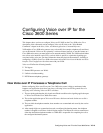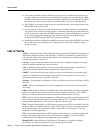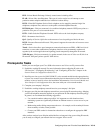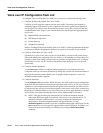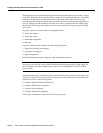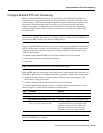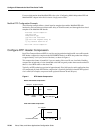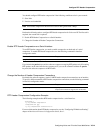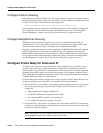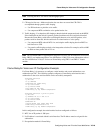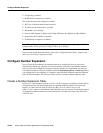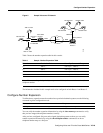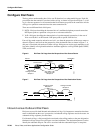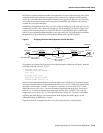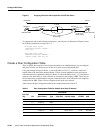
Configure IP Networks for Real-Time Voice Traffic
VC-18
Voice, Video, and Home Applications Configuration Guide
The important thing to remember is that QoS must be configured throughout your network—not just
on the Cisco 3600 series devices running VoIP—to improve voice network performance. Not all QoS
techniques are appropriate for all network routers. Edge routers and backbone routers in your
network do not necessarily perform the same operations; the QoS tasks they perform might differ as
well. To configure your IP network for real-time voice traffic, you need to take into consideration
the functions of both edge and backbone routers in your network, then select the appropriate QoS
tool or tools.
In general, edge routers perform the following QoS functions:
• Packet classification
• Admission control
• Bandwidth management
• Queuing
In general, backbone routers perform the following QoS functions:
• High-speed switching and transport
• Congestion management
• Queue management
Scalable QoS solutions require cooperative edge and backbone functions.
Note In a subsequent Cisco IOS release, we have implemented enhancements to improve QoS on
low speed, wide-area links, such as ISDN, MLPPP, and Frame Relay running on edge routers. For
more information about these enhancements, refer to the Cisco IOS Release 12.0(5)T “IP RTP”
feature module.
Although not mandatory, some QoS tools have been identified as being valuable in fine-tuning your
network to support real-time voice traffic. To configure your IP network for QoS using these tools,
perform one or more of the following tasks:
• Configure Multilink PPP with Interleaving
• Configure RTP Header Compression
• Configure Custom Queuing
• Configure Weighted Fair Queuing
Each of these components is discussed in the following sections.



